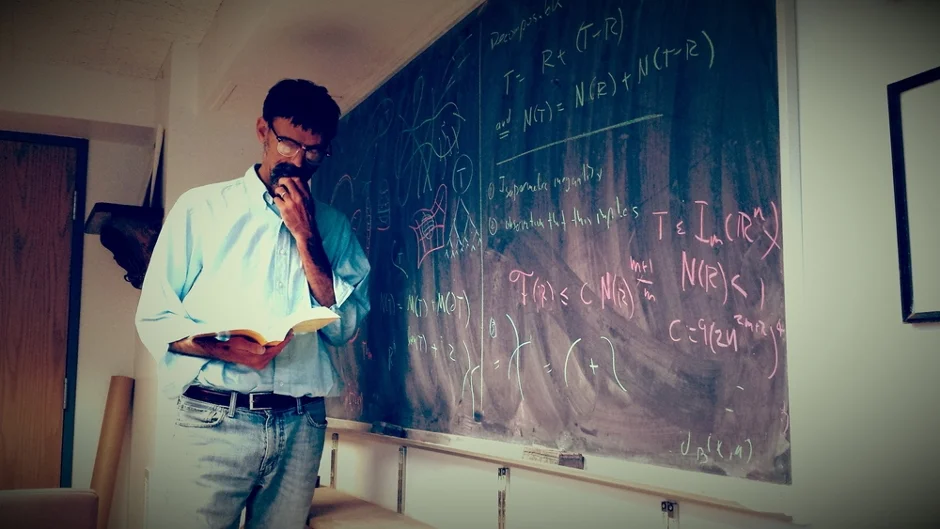I am inspired and motivated by the interaction of analysis and geometry. I also find applications to data modelling and analysis to be a very rich source of new ideas.
I was first introduced to geometric measure theory by David Caraballo, who I met at the 1999 joint meetings in San Antonio, in a short course on Nonlinear Control Theory. David Caraballo convinced me (he was the pied piper -- I was completely swept away with his beautiful obsession) that GMT was the thing for me to study and I went home to Los Alamos and worked rather quickly through a majority of Evans and Gariepy's Measure Theory and Fine Properties of Functions.
I was hooked.
At this same time I was beginning to work on image analysis problems related to very sparse tomography problems. The image analysis, that ended up drawing me more deeply into the theory of sets of finite perimeter, also drew Bill Allard into collaborations with me on data analysis problems. During a visit to Duke University hosted by Andrea Bertozzi, Andrea introduced me to Bill Allard and I invited him to Los Alamos to visit me. He began working with my team on the rather fascinating data analysis problems we had at the lab, while at the same time he began writing the definitive papers on the properties of minimizers of TV regularized image functionals. Over a period of several years, some of his deep knowledge in geometric measure theory began rubbing off on me. The 2008 move to academia and the resulting need to mentor students in the dual arts of (1) unravelling intricate mathematical problems and (2) developing a research vision, has deepened my focus on geometric analysis and geometric measure theory.
Geometric measure theory has a reputation for being difficult, but if you learn to translate difficult looking prose into pictures, using the lowest dimensional example that will work, the task is made easier, sometimes by a very large amount. Here are a couple of blog articles (you can find them here and here), the first introduces you to GMT reference books and the second opens up the world of geometric measure theory using the vehicle of the derivative.
In spite of the fact that I do not have any openings for graduate students (and will not have for a few years), if you are passionate about analysis and geometry, with an interest in interaction with data analysis applications or have any questions about anything you read here, feel free to email me.
Interests and Expertise
Geometric Analysis, broadly defined
High Dimensional Geometry
Data analysis methods using geometric insights
Classes
More Information/Contact
Curriculum Vitae: papers, activities, students, history, etc. all in .
email: vixie@speakeasy.net
Blog: Notes from Kevin R. Vixie
Craft: Art and Photography
Phone: (310) 740-2835
Note about communication: I do respond to non-spam contacts, but it may take awhile for me to respond. I value extended, distraction-free times for focused work. If you have not seen David Levy’s No TIme To Think, or read William Power’s Hamlet’s Blackberry, I recommend you take the time to see the video and read the book. There is also the work by Mihaly Csikszentmihalyi on Flow that is worth checking out. There are other more recent works, but the flaws in the most prominent of those works (along with a desire to be kind) make it difficult to recommend that work without a parallel, in person conversation about the pitfalls in those expositions. As a result of placing a priority on deeper thought and connection with people close to me, responses may take awhile.
Photography by Levi K. Vixie
